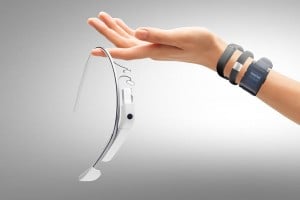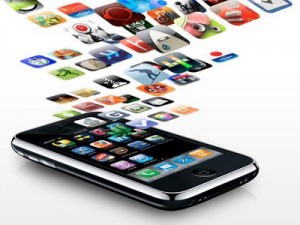There has been a lot of talk about wellness technology and how it can help promote, encourage, manage, and achieve better health for millions of Americans. The wellness technology landscape is broad and can be divided into two groups: mobile and non-mobile. Mobile wellness can then be further divided into two sub-categories: mobile app wellness and wearable wellness.

The mobile app category consists of over 40,000 health and wellness apps that can be accessed from a smartphone. The wearable wellness category consists of wearable devices like Fitbits, smart watches, smart clothing, and Google Glass.
Wearable wellness has received a lot of well-deserved attention lately. While wearable wellness technology is no doubt a game changer, it will not be the driving force in making mobile wellness technology mainstream in the corporate wellness space. Mobile wellness ubiquity in the corporate space will instead come from mobile apps because of cost, flexibility, and ease of distribution.
Cost
Costs are half the equation in determining the ROI of wellness programs so managing costs is critical. Mobile app technology is significantly cheaper because most employees already have a smartphone that can support health and wellness apps and employers do not need to purchase or maintain devices. These cost advantages allow employers to invest in other areas of their wellness strategy, including richer incentives to reward healthy behavior and healthy food options. Many leading wellness apps are free, but even those that are not free are far cheaper than a wearable device and do not have incremental costs for maintenance.
Flexibility

With over 40,000 health and wellness apps in the market there is an app for everyone. Apps address a broad range of wellness behavior from educational health content to nutrition and physical activity tracking to meditation practice. Wearable wellness tends to focus on activities that can be tracked by your body’s movement, which narrows the definition of wellness. With more options to participate in a wellness program, employees have the flexibility to engage with the apps that are most appealing to them and do not have to be limited by a piece of hardware.
Distribution
Wearable devices require physical distribution to employees; mobile apps do not. While distribution (and sometimes collection) of a wearable device is not an insurmountable hurdle, it can present logistical challenges and unnecessary extra work for a human resources department. Additionally, employers will be responsible for hardware maintenance (faulty products, battery failure, etc.) and replacement. Alternatively, employees can download the mobile apps most relevant to their interests, update them on their own, and even transfer them to new devices through the cloud, without putting any burden on the employer. The ease of mobile app distribution relative to wearable distribution improves the lives of wellness program administrators and participants, increases engagement (by not having downtime due to hardware issues), and requires fewer resources (lower costs).
Wearable Devices And Corporate Wellness Don’t Mix?
No, not at all! While mobile app wellness will be the driver of workplace wellness technology proliferation, employers should not abandon wearable devices altogether. For the right employer, a wearable device is a great way to jumpstart a high-engagement wellness program. A wearable device can act as an incentive. Receiving a new wearable device will encourage employees to participate. Also, wearables are perfect for tracking certain specific activities with great ease.
Remember, It’s About Options
Mobile apps and wearable devices do not need to be mutually exclusive. Employees should be able to choose how they want to participate from a number of options, including mobile apps and wearables. Even if an employer does not purchase wearable devices, employees who have a wearable device should be able to use the device with the wellness program (think BYOD for wellness programs). If an employee doesn’t have a wearable device, then he or she can choose from one of many mobile apps.












